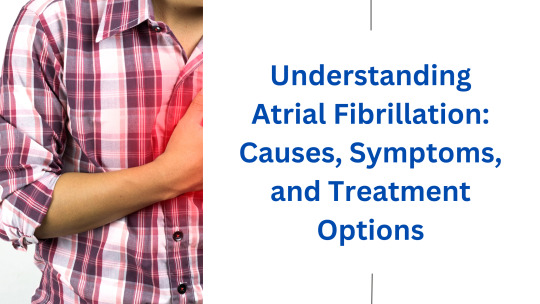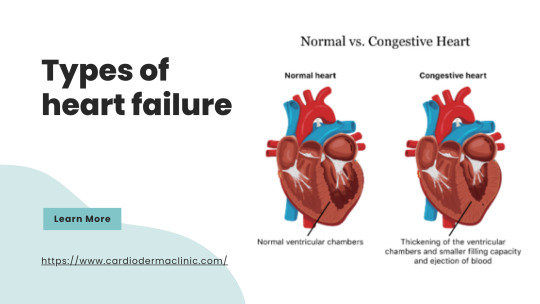Text
Dr. Snehal Lunge Patil - Ladies Skin Specialist in Pune, Sinhagad Road
#ladiesskinspecialistinpunesinhagadroad#dermatology#dermatologist#plasticsurgery#skin#dermatologia#laserhairremoval#aestheticmedicine
0 notes
Text
Dr. Snehal Lunge Patil - Hair and Skin Specialist on Sinhagad Road, Pune
#dermatologist#dermatology#skincare#skin#beauty#skincareroutine#acne#botox#healthyskin#antiaging#laser#skincaretips#aesthetic#aesthetics#doctor#cosmeticdermatology#skindoctor#glowingskin#skintreatment#skinclinic#plasticsurgery#fillers#dermatologia#health#derm#acnetreatment#boardcertifieddermatologist#medicine#filler#skincareproducts
0 notes
Text
Consult Best Dermatologist Sinhagad Road Pune - Dr. Snehal Lunge Patil
#dermatologist#dermatology#skincare#skincareroutine#beauty#acne#healthyskin#antiaging#laser#skincaretips#aesthetic#aesthetics#cosmeticdermatology#dermatologia
0 notes
Text
Consult Best heart specialist sinhagad road pune- Dr. Vaibhav Patil
0 notes
Text
Consult Best Cardiologist Sinhagad Road Pune - Dr Vaibhav Patil
#bestcardiologistsinhagadroadpune#cardiologist#cardiology#heart#doctor#hearthealth#cardiovascular#cardiac#heartdisease#echocardiography#cardiologia
0 notes
Text
https://www.cardiodermaclinic.com/
0 notes
Text
Understanding Atrial Fibrillation: Causes, Symptoms, and Treatment Options

Genetics plays a significant role in heart disease, influencing an individual's susceptibility to developing certain cardiovascular conditions. Understanding the impact of genetics can help identify individuals at higher risk and guide preventive measures and targeted interventions. Here, we explore the role of genetics in heart disease and its implications. Consult Cardiologist Dr. Vaibhav B Patil
Genetic Factors and Heart Disease
Family History: Having a family history of heart disease, especially in first-degree relatives (parents, siblings), increases the risk of developing similar conditions. This suggests a genetic predisposition to cardiovascular disorders.
Genetic Mutations: Specific genetic mutations can directly contribute to the development of heart disease. For instance, mutations in genes responsible for lipid metabolism, such as the LDL receptor gene, can lead to familial hypercholesterolemia, a condition characterized by high cholesterol levels and an increased risk of heart disease.
Inherited Conditions: Certain genetic disorders are directly linked to heart disease. Examples include hypertrophic cardiomyopathy, Marfan syndrome, familial dilated cardiomyopathy, and familial arrhythmias. These conditions are caused by gene mutations that affect the structure or function of the heart.
Genetic Variants and Risk Markers: Researchers have identified specific genetic variants and markers associated with an increased risk of heart disease. These variants may influence factors such as cholesterol metabolism, blood pressure regulation, inflammation, and clotting mechanisms.
Interplay of Genetics and Lifestyle
While genetics play a role, it's important to recognize that heart disease is often influenced by a combination of genetic and lifestyle factors. Lifestyle choices can interact with genetic predispositions, either amplifying or mitigating the risk. For example:
Diet and Exercise: A healthy lifestyle, including a balanced diet and regular exercise, can help reduce the impact of genetic risk factors. Individuals with a genetic predisposition to heart disease can still make a positive impact on their cardiovascular health through healthy lifestyle choices.
Smoking and Environmental Exposures: Environmental factors, such as smoking and exposure to secondhand smoke, can interact with genetic susceptibility to increase the risk of heart disease. Avoiding or quitting smoking is crucial for overall heart health.
Stress Management: Chronic stress can affect heart health. While not directly related to genetics, individuals with a genetic predisposition to heart disease may benefit from stress management techniques to reduce the impact of stress on their cardiovascular system.
Genetic Testing and Personalized Medicine
Advancements in genetic testing have provided opportunities for personalized medicine in the field of cardiology. Genetic testing can help identify specific gene mutations associated with heart disease, allowing for targeted interventions and treatment strategies. It can also aid in risk assessment, helping individuals make informed decisions about lifestyle modifications and preventive measures.
However, it's important to note that genetic testing for heart disease is not yet routine and is typically reserved for individuals with a family history of specific conditions or those showing signs of inherited cardiac disorders. Genetic counseling is often recommended to interpret the results and provide appropriate guidance.
Conclusion
Genetics significantly influences an individual's risk of developing heart disease. Family history, genetic mutations, inherited conditions, and specific genetic variants all contribute to the interplay between genetics and cardiovascular health. However, lifestyle factors and environmental exposures also play a crucial role. By understanding the role of genetics in heart disease, individuals can take proactive steps to mitigate risks, adopt a heart-healthy lifestyle, and work closely with healthcare professionals to develop personalized strategies for prevention and treatment.
#best heart specialist sinhagad road pune#best dermatologist sinhagad road pune#gynecologistinnavimumbai#hair and skin specialist sinhagad road pune
0 notes
Text

#bestgynecologistinkharghar#Ehighriskpregnancyspecialistinkharghar#bestfemalegynecologistinkharghar#Ladiesgynecologistinkharghar#GynecologistinNaviMumbai#MedicalTerminationOfPregnancyinKhargharNaviMumbai
0 notes
Text
#bestgynecologistinkharghar#Ehighriskpregnancyspecialistinkharghar#bestfemalegynecologistinkharghar#Ladiesgynecologistinkharghar#GynecologistinNaviMumbai#MedicalTerminationOfPregnancyinKhargharNaviMumbai
0 notes
Text
The Role of Exercise in Maintaining a Healthy Heart
Introduction: Maintaining a healthy heart is essential for overall well-being and longevity. While factors like genetics and diet play a significant role, regular exercise is one of the most effective ways to keep your heart strong and reduce the risk of heart disease. In this blog, we will explore the crucial role of exercise in maintaining a healthy heart and provide practical tips to incorporate physical activity into your daily routine.
Understanding the Benefits of Exercise for Heart Health: Regular exercise offers numerous benefits for cardiovascular health. It strengthens the heart muscle, improves blood circulation, lowers blood pressure, reduces LDL cholesterol (the "bad" cholesterol), increases HDL cholesterol (the "good" cholesterol), and helps manage body weight. Additionally, exercise improves insulin sensitivity, reduces inflammation, and enhances overall cardiovascular function.
Types of Exercise for a Healthy Heart: a. Aerobic Exercise: Engaging in aerobic activities like brisk walking, jogging, swimming, cycling, or dancing increases heart rate, improves lung function, and strengthens the heart. Aim for at least 150 minutes of moderate-intensity aerobic exercise or 75 minutes of vigorous-intensity exercise per week. b. Strength Training: Incorporating strength training exercises, such as weightlifting or using resistance bands, into your routine can help build lean muscle mass and improve overall cardiovascular fitness. Aim for two or more sessions per week, targeting major muscle groups. c. Flexibility and Balance Exercises: Activities like yoga or Pilates can enhance flexibility, balance, and posture, contributing to overall heart health.
Getting Started with Exercise: a. Consult Your Cardiologist: If you have an existing heart condition or are new to exercise, it is crucial to consult your cardiologist before starting an exercise program. They can provide personalized recommendations based on your specific needs and medical history. b. Start Slowly: Begin with low-impact exercises and gradually increase the intensity and duration. This allows your body to adapt and reduces the risk of injuries. c. Set Realistic Goals: Establish achievable goals that align with your current fitness level and gradually progress over time. This approach helps maintain motivation and prevents burnout. d. Make it Enjoyable: Choose activities you enjoy, as it increases the likelihood of sticking to your exercise routine. Consider joining group fitness classes, exercising with a friend, or exploring outdoor activities to make it more fun.
Tips for Incorporating Exercise into Your Daily Routine: a. Schedule Regular Exercise: Treat exercise as an important appointment in your daily schedule. Aim for consistency by setting aside specific times each day dedicated to physical activity. b. Make it Convenient: Find ways to incorporate exercise into your daily routine. For example, take the stairs instead of the elevator, walk or cycle to nearby destinations, or engage in active hobbies like gardening. c. Break it Up: If finding large chunks of time for exercise is challenging, break it up into shorter sessions throughout the day. Even ten minutes of physical activity at a time can provide health benefits.
0 notes
Text
https://www.cardiodermaclinic.com/
#cardiologist sinhagad road pune#best heart specialist sinhagad road pune#best dermatologist sinhagad road pune#hair and skin specialist sinhagad road pune
0 notes
Text
The benefits of a balanced diet for healthy skin and hair: How your diet can affect your skin and hair health, and what foods to include for a healthy and glowing complexion.

We all know that a balanced diet is essential for overall health and wellbeing. However, did you know that what you eat can also have a significant impact on your skin and hair health? In this blog post, we will explore the benefits of a balanced diet for healthy skin and hair, and what foods you should include in your diet for a healthy and glowing complexion.
How does diet affect skin and hair health?
Your diet plays a crucial role in maintaining healthy skin and hair. The foods you eat provide your body with the nutrients it needs to function correctly, including the production of collagen and elastin, which keep your skin looking youthful and vibrant. Additionally, a diet lacking in essential vitamins and minerals can lead to skin and hair problems such as acne, dryness, and brittle hair.
What foods should you include in your diet for healthy skin and hair?
Fruits and vegetables - These are rich in vitamins and antioxidants that help protect your skin from damage caused by free radicals. They also help keep your skin and hair hydrated, which is essential for healthy-looking skin and hair.
Whole grains - Whole grains are rich in fiber, which helps remove toxins from your body. They also contain B vitamins that are essential for healthy skin and hair.
Protein - Protein is essential for healthy hair growth and can be found in foods like eggs, fish, and lean meat. It also helps repair and maintain healthy skin tissue.
Healthy fats - Healthy fats such as those found in nuts, seeds, and avocados are essential for healthy-looking skin and hair. They help keep your skin moisturized and provide a natural glow to your hair.
Water - Drinking enough water is crucial for maintaining healthy skin and hair. It helps flush out toxins and keeps your skin and hair hydrated.
What foods should you avoid for healthy skin and hair?
Processed foods - Processed foods are often high in sugar and unhealthy fats, which can lead to skin problems such as acne.
Alcohol - Alcohol dehydrates your body, which can lead to dry skin and brittle hair.
Caffeine - Caffeine can also dehydrate your body and lead to dry skin and hair.
In conclusion, a balanced diet is essential for healthy skin and hair. Including fruits and vegetables, whole grains, protein, healthy fats, and water in your diet can help promote healthy-looking skin and hair. Additionally, avoiding processed foods, alcohol, and caffeine can help prevent skin and hair problems. By making healthy food choices, you can achieve a healthy and glowing complexion.
0 notes
Text
https://www.cardiodermaclinic.com/skin-tag-wart-removal/
hair and skin specialist sinhagad road pune
0 notes
Text
Types of heart failure

In heart failure, the heart can no longer pump enough blood throughout the body. The heart muscle is too weak or not flexible enough. Different parts of the heart can also be affected. The type of medicine people use to treat heart failure depends on the type of heart failure they have.
Heart failure often affects only the left or right side of the heart, but it can affect both. Doctors distinguish between three types of heart failure, according to:
Left-sided heart failure: The left ventricle of the heart no longer pumps enough blood throughout the body. As a result, blood accumulates in the pulmonary veins (blood vessels that carry blood from the lungs). This causes trouble breathing, wheezing or coughing, especially during physical activity. Left sided heart failure is the most common type.
Right-sided heart failure: Here the right ventricle of the heart is too weak to pump enough blood to the lungs. This causes blood to pool in the blood vessels (blood vessels that carry blood from organs and tissues to the heart). Increased pressure in the veins can cause fluid to move from the blood vessels into the surrounding tissues. This causes fluid to accumulate in the legs or, less commonly, in the genital area, organs, or abdomen (stomach).
Biventricular Heart Failure: In biventricular heart failure, both sides of the heart are affected. This can cause symptoms similar to left- and right-sided heart failure, such as shortness of breath and fluid retention.
Left-sided heart failure is usually caused by coronary artery disease (CAD), heart attack, or chronic high blood pressure. Right-sided heart failure usually develops as a result of advanced left-sided heart failure and is then treated similarly. Sometimes it is caused by certain lung diseases such as high blood pressure in the lungs, pulmonary embolism (pulmonary embolism) or COPD.
Classification based on pumping capacity
Today, heart failure is increasingly classified based on the pumping capacity of the heart. Because pumping capacity plays an important role in choosing the most suitable drug. There are two types of heart failure:
Heart failure with reduced pumping capacity: The heart muscle is weakened and does not pump enough blood throughout the body when it contracts (squeezes). As a result, body parts do not get enough oxygen. The medical term for this is "heart failure with reduced ejection fraction".
Heart failure with preserved pumping capacity: Although the heart muscle is still strong, it cannot relax and widen enough after squeezing blood, so it does not fill with blood properly. Despite adequate pumping, the body does not pump enough blood as a result, especially during physically strenuous activities. Doctors call this "heart failure with preserved ejection fraction".
Heart failure with reduced pumping capacity is sometimes called "systolic" heart failure, and heart failure with preserved pumping capacity is also called "diastolic" heart failure. The systolic phase of the cardiac cycle is the phase in which the heart contracts (squeezes) and the diastolic phase is when the heart relaxes and widens.
best heart specialist sinhagad road pune
0 notes
Text
https://www.cardiodermaclinic.com/about-dr-vaibhav-patil/
1 note
·
View note